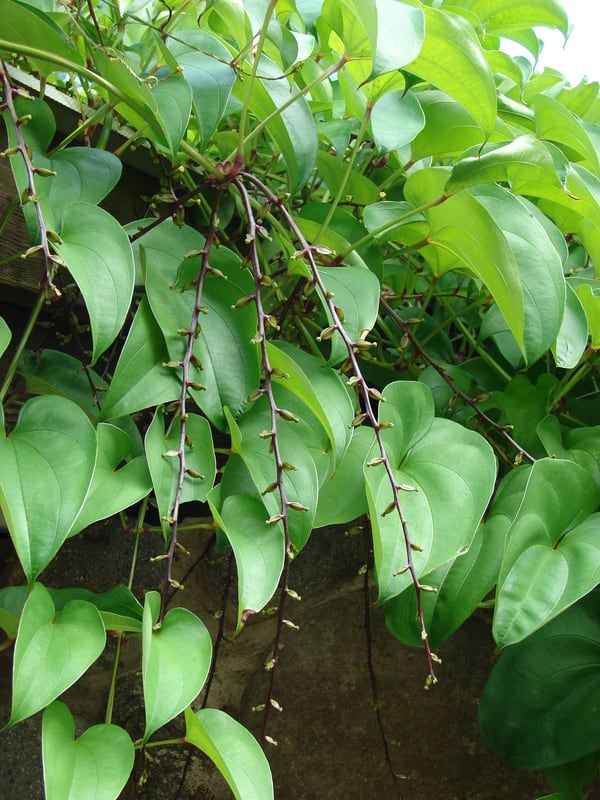
🌿 Morphology
🌞 Growing conditions
🌍 Origin and family
🌾 Uses
Warning: Despite the care taken in writing this sheet, it is essential to cross-reference sources before using or consuming any plant. When in doubt, consult a qualified professional
Permaculture uses
The tubers are a staple food crop, providing carbohydrates. Young leaves and shoots are also edible. The plant is used as a living trellis for other crops. Some cultivars, like 'Ube', have brightly colored tubers that are used for culinary purposes and are also ornamental.
Permapeople description
Water yam, a species of yam used for food
Botanical description
Dioscorea alata is a species of yam in the genus Dioscorea. It is a tuberous vine, climbing to 10 meters (33 feet). The stems are typically winged, hence the common name 'Winged Yam'. Leaves are heart-shaped and opposite. Flowers are small and inconspicuous. Tubers are variable in shape and color, ranging from white to purple. It is native to Southeast Asia but has been introduced worldwide.
Companion planting
Good companion plant for legumes and nitrogen-fixing plants. Can be used as a trellis for climbing beans. Avoid planting near other tuber crops to prevent competition for nutrients.
Propagation methods
Tubers, stem cuttings, aerial tubers (bulbils). Tuber sections containing buds are the most common propagation method.
History and traditions
Yam has been cultivated for thousands of years in Southeast Asia and the Pacific Islands. It holds cultural significance in many societies, often associated with rituals and ceremonies. In some cultures, it symbolizes abundance and prosperity. Different cultivars have been developed for various culinary and medicinal purposes.
Usage calendar
Planting: Spring. Harvesting: Autumn to Winter (depending on variety and location). Flowering: Summer.
